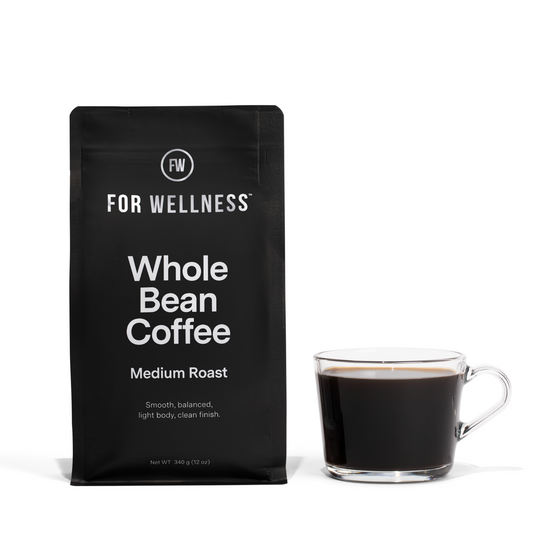Contrary to the Marilyn Monroe classic ‘Some Like it Hot’, when it comes to coffee, just about everyone likes it hot.
Notwithstanding the rise of cold brew, the enjoyment of a hot cup of coffee is positively correlated to finding that perfect nexus between warm and scalding.
Not only that, but the very flavor of our coffee is manipulated by the temperature at which it’s brewed, so it’s well worth wrapping your head around how hot you should be brewing and serving your coffee.
That’s why we’ve put together this brief explainer, which will detail how the heat of your coffee influences your experience, and the steps you can take to get it right.
Cold brew devotees, look away. This is not the article for you.


The Good Stuff - Performance
-
One scoop will infuse your coffee with healthy ingredients
-
Ditch the bad stuff like sugar, dairy, and artificial creamers
-
Fights inflammation and supports skin and joint health
-
Makes your coffee taste great
Why Does Temperature Matter?
Making the perfect cup of coffee is a delicate balance of time and heating, because the temperature of your water can have major consequences for the flavor and architecture of your brew.
At an overly-simplistic level, to make our morning cup of joe, we run water through our beans which extracts the coffee.
The hotter your water is, the quicker you can extract flavor. However, if the water’s too hot, you’ll over extract and dominate the complex elements of your coffee.
Brew your grinds on a low heat and not only will it take longer, but you’ll be left with a weaker, flatter flavor.
So What is the Right Temperature?
There are several ways to approach this question, depending on the time and resources you’re willing to devote to it.
The National Coffee Association argues that between 195 and 205 degrees Fahrenheit is the best range for optimum extraction, while the Specialty Coffee Association is more precise, recommending a cupping water temperature of 200 degrees Fahrenheit when poured over grounds.
The key idea here is your water should be close to boiling - but no hotter - when added to your coffee. You can let the water come to a full boil and give it a minute to rest if you aren’t able to get super precise with your kettle settings.
One final thing to consider is the roast of your bean.
Typically, lighter roasts of coffee take more time and heat to extract, while the opposite is true of darker roasts. Try heating your water hotter (200-205 degrees Fahrenheit) for lighter roasts and cooler for darker roasts (195-200 degrees Fahrenheit) to bring out the best flavor.
How to Get it Right
If you have a coffee machine, it’ll likely automatically heat your coffee to the correct temperature. However, if you’d like to double check, pop a thermometer in your cup.
Feeling really fancy? Laser thermometers allow you to test the temperature externally!
If pour-over coffee is your method of choice, try purchasing a kettle that lets you select the heat of your water. For those who don’t have such a precise kettle, either use a thermometer or simply boil your water and give it a minute to cool slightly before making your coffee.
What’s the Perfect Serving Temperature?
Most of us start sipping as soon as it’s safe to do so, which is by all means an acceptable approach.
For those getting technical though, the most recommended temperature for drinking a cup of coffee is roughly 140 degrees Fahrenheit, give or take a little.
It’s also important to remember that if you’re adding milk, you’ll cool your drink down significantly, so be sure to adjust for that.
TIP: Heat up your milk before pouring it in if your coffee is consistently too cool.










